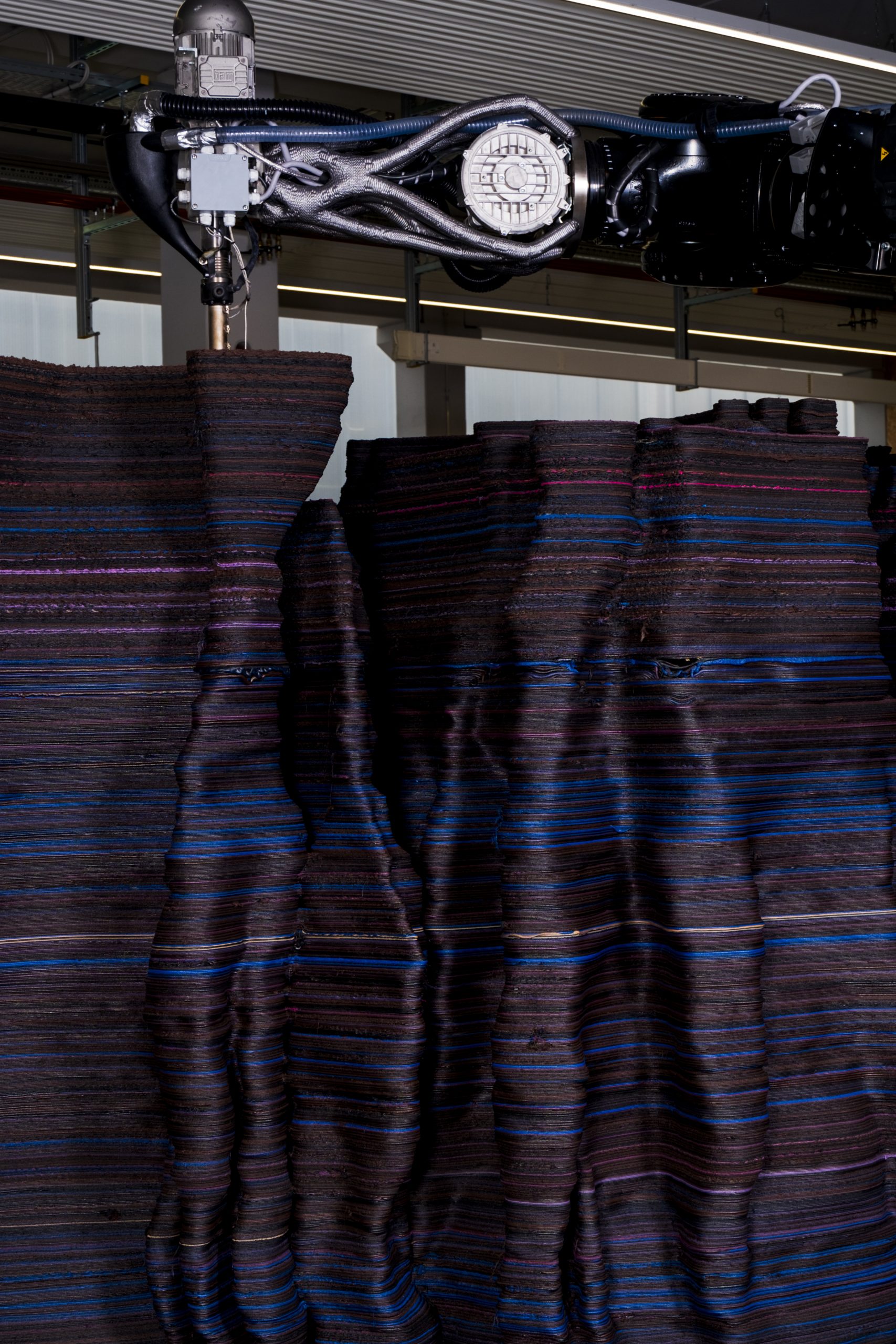Type:
Country:
City:
Year:
Status:
Size:
Services:
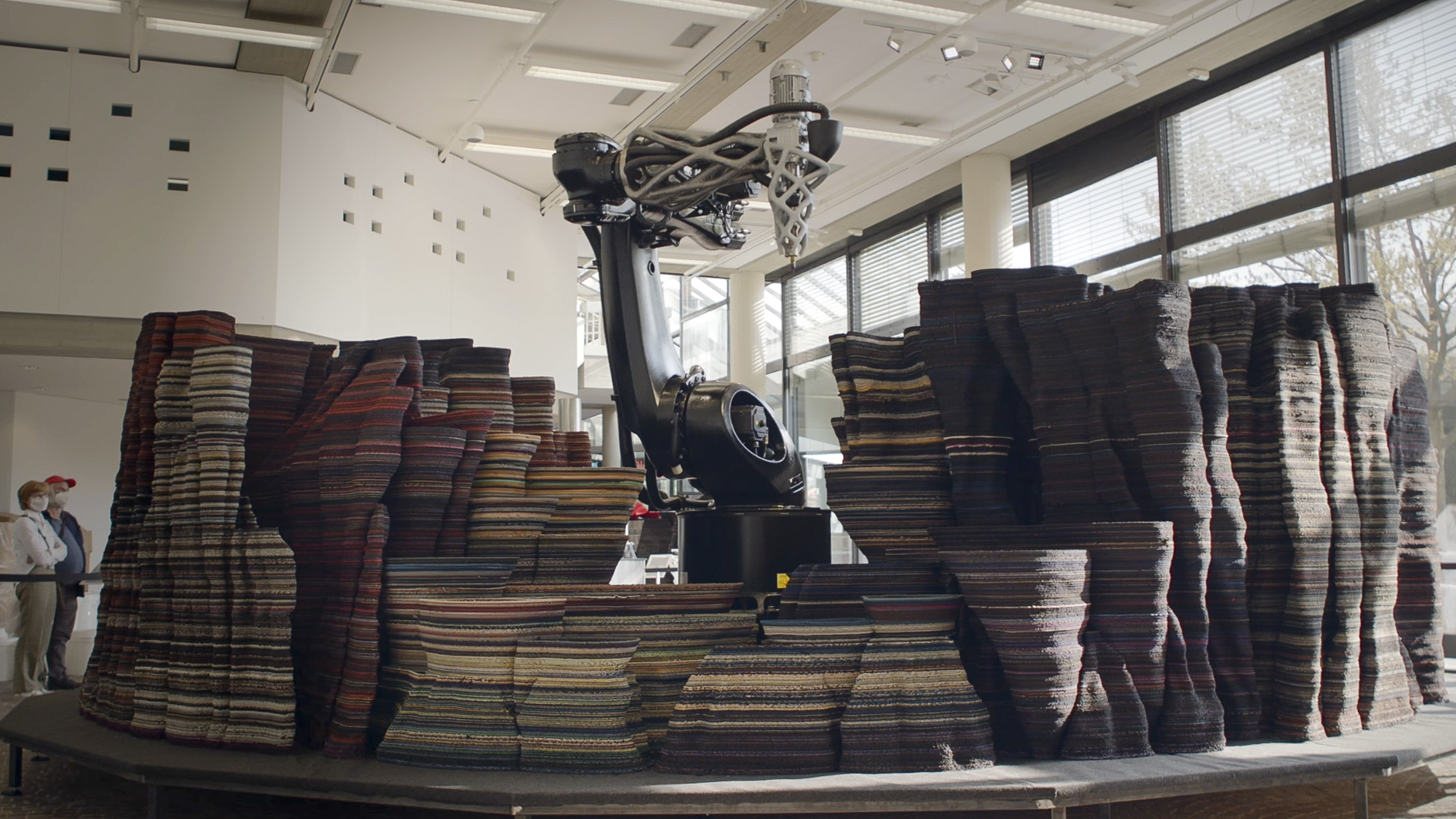

Type:
Country:
City:
Year:
Status:
Size:
Services:
Sculpture
Germany
Hannover
2022
Finished
34,2m²
Consultancy
Computational Design
Technology Development
Additive Manufacturing
Technology
Robotic Fused Deposition Modeling
Design Assist
Digital Modelling
Material Development
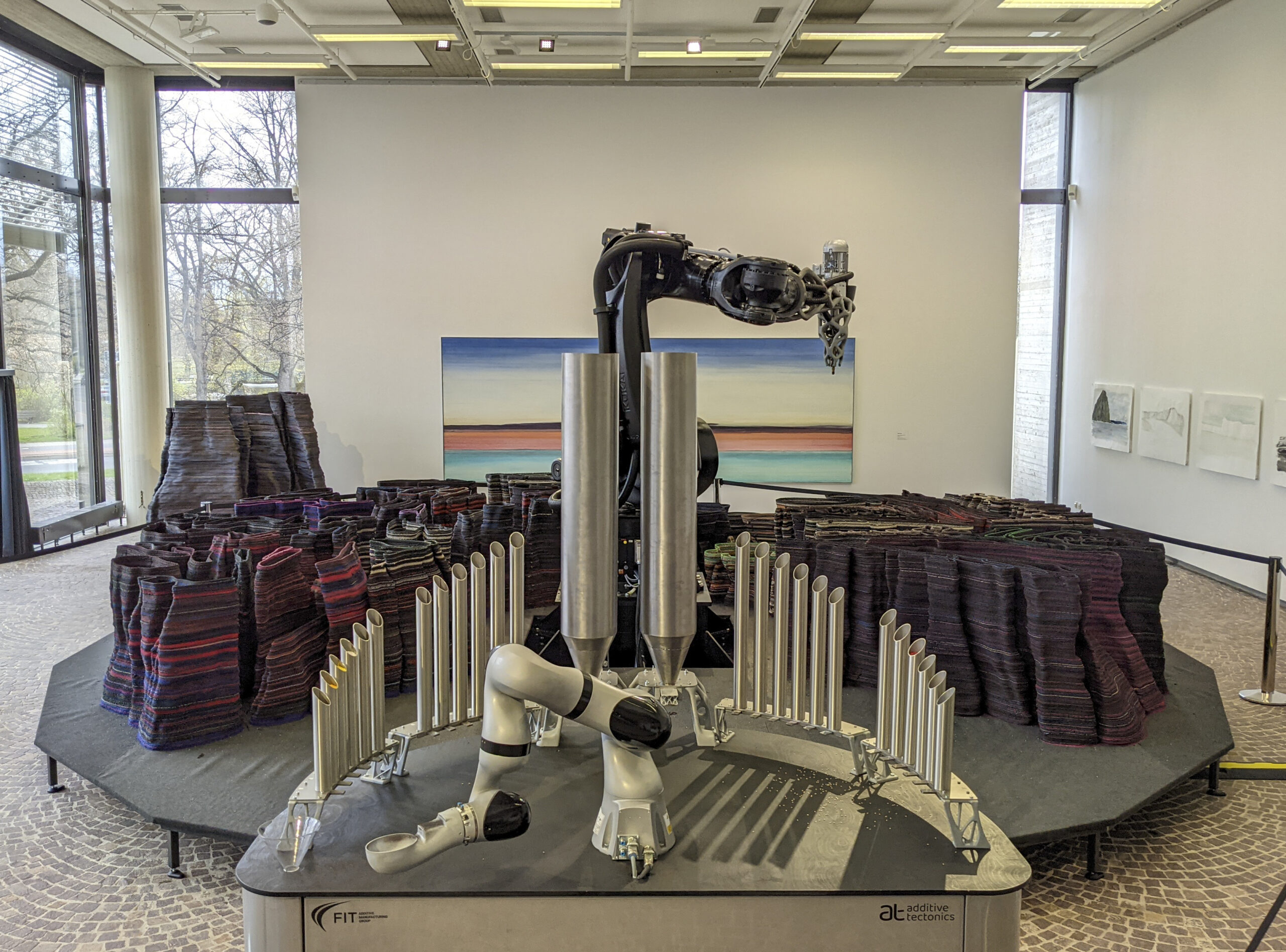
Type:
Country:
City:
Year:
Status:
Size:
Services:
Sculpture
Germany
Hannover
2022
Finished
34,2m²
Consultancy
Computational Design
Technology Development
Additive Manufacturing
Technology
Robotic Fused Deposition Modeling
Design Assist
Digital Modelling
Material Development

SKER is a sculpture by artist Peter Lang, which shows a completely new way of creating art in the digital age. This happened not behind closed doors on a factory floor, but live in front of an audience, in one of the world’s most renowned museums of modern art: the Sprengel Museum Hannover. In collaboration with additive tectonics, a novel process was developed to bring Peter Langs vision into (virtual-)reality.
SKER is a sculpture by artist Peter Lang, which shows a completely new way of creating art in the digital age. This happened not behind closed doors on a factory floor, but live in front of an audience, in one of the world's most renowned museums of modern art: the Sprengel Museum Hannover. In collaboration with additive tectonics, a novel process was developed to bring Peter Langs vision into (virtual-)reality.
With VR goggles and two laser inputs, SKER was created completely in the virtual world. Standing in the middle of his studio, the artist drew the contour lines of the artwork in layers, just like an additive manufacturing machine would. Parallel to the shape, he simultaneously defined the constantly changing colors so that the work would ultimately reflect the sedimentary layers of the lava island off Iceland from which he was inspired to create this artwork.
During 8 weeks and more than 600 hours, a first sculpture, a virtual one, was created in the metaverse. All digital information provided by the artist was converted in real time by a software specially developed for this project. It was immediately visualized and enabled the artist to see the entire work as well as each individual section at all times, on 360°.
Between the virtual sculpture and the analog sculpture, a production infrastructure needed to be developed. The goal was to control and synchronize two robots in such a way that they would cooperate to create the artwork. A mixing robot was responsible for all material handling, while another took care of the additive manufacturing process.
During the mixing process, the robot was programmed to use precise quantities of different materials from color tanks at specified times. In that way, an ever changing color tone could be achieved to the vision of the artist, who pre-planned the exact location of color in VR. The material was then fed to the extrusion robot using a specially developed vacuum system.
The material used is a granular biopolymer made from lignin. Sustainable and 100% biodegradable. The granules were dyed in 24 different shades, making it possible to achieve over 20,000 color combinations.
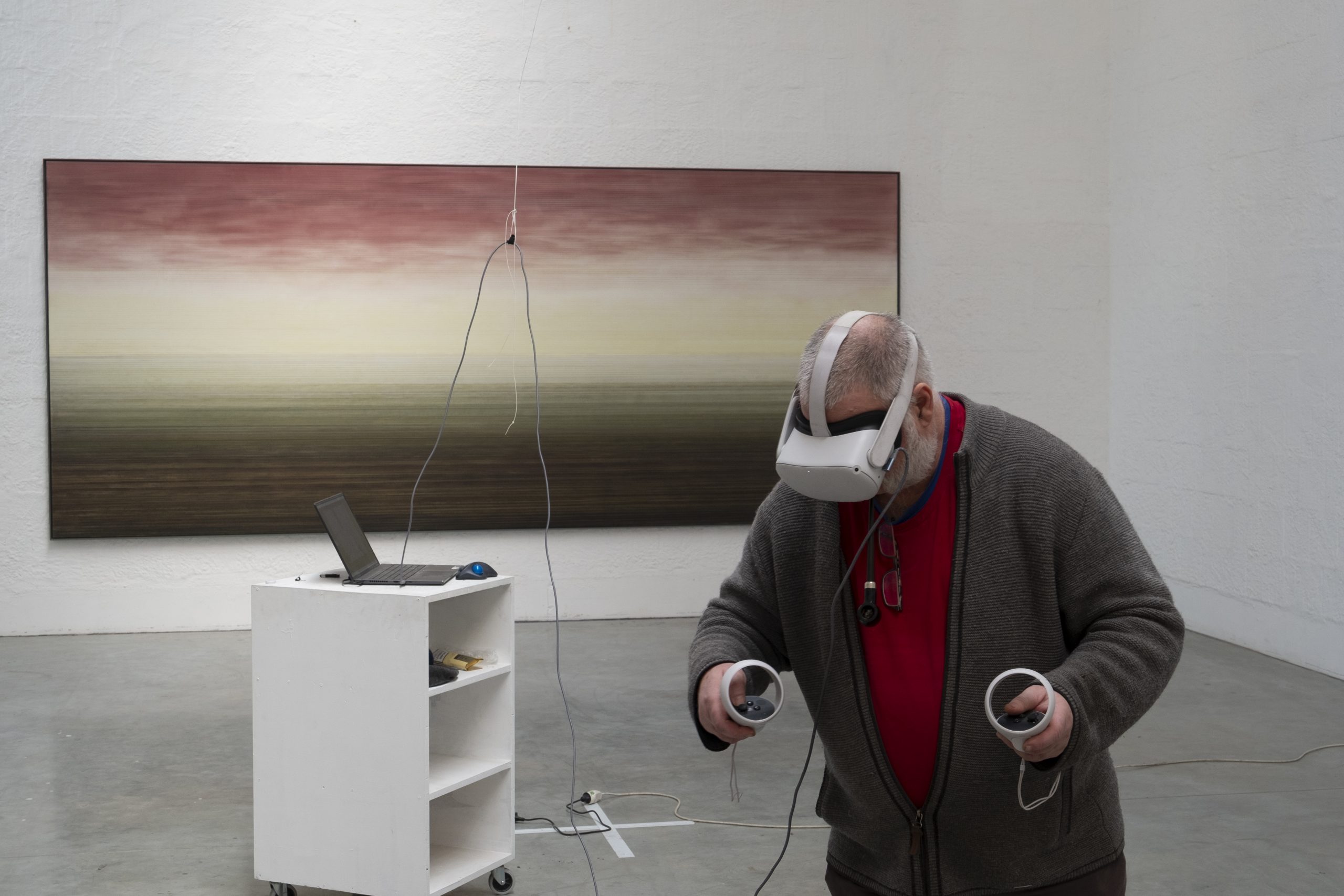
With VR goggles and two laser inputs, SKER was created completely in the virtual world. Standing in the middle of his studio, the artist drew the contour lines of the artwork in layers, just like an additive manufacturing machine would. Parallel to the shape, he simultaneously defined the constantly changing colors so that the work would ultimately reflect the sedimentary layers of the lava island off Iceland from which he was inspired to create this artwork.
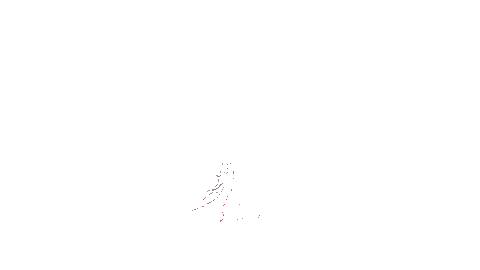
During 8 weeks and more than 600 hours, a first sculpture, a virtual one, was created in the metaverse. All digital information provided by the artist was converted in real time by a software specially developed for this project. It was immediately visualized and enabled the artist to see the entire work as well as each individual section at all times, on 360°.
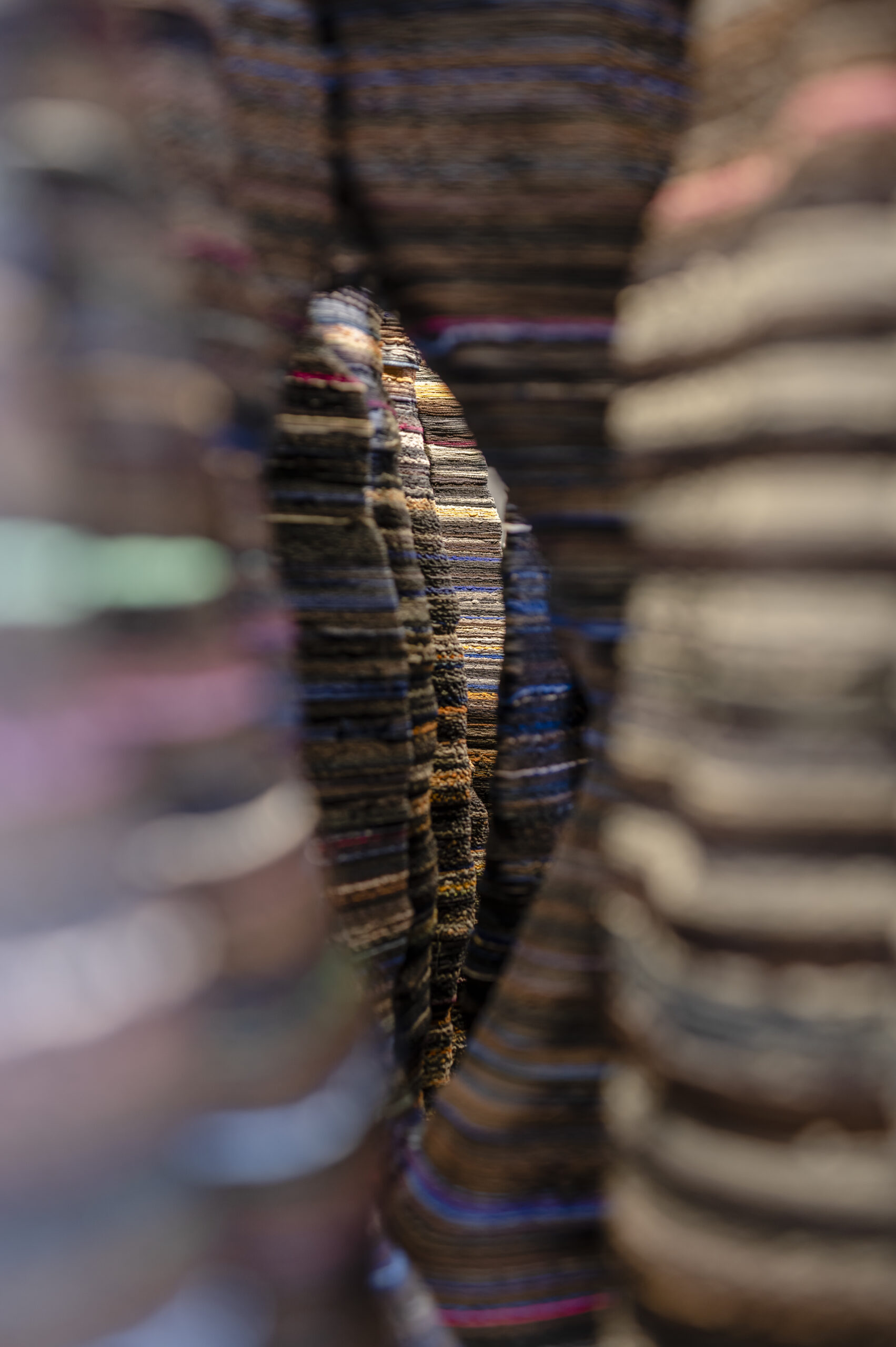
Between the virtual sculpture and the analog sculpture, a production infrastructure needed to be developed. The goal was to control and synchronize two robots in such a way that they would cooperate to create the artwork. A mixing robot was responsible for all material handling, while another took care of the additive manufacturing process.
